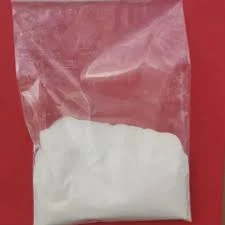Pentoxifylline Mechanism, Uses, and Implications in Medicine
Pentoxifylline, a methylxanthine derivative, is primarily known for its ability to improve blood flow and oxygenation in tissues. This pharmaceutical agent has been widely studied and utilized for various conditions, especially those related to circulatory disorders. Originally developed in the 1970s, pentoxifylline is often prescribed to patients with peripheral artery disease, chronic venous insufficiency, and even diabetic foot ulcers.
The mechanism of action of pentoxifylline is multifaceted. It primarily works by increasing the flexibility of red blood cells, which reduces blood viscosity. This property ensures that the blood can flow more freely through narrowed or obstructed blood vessels. Furthermore, pentoxifylline inhibits platelet aggregation and reduces the formation of fibrin, a protein involved in blood clotting. This dual action not only enhances microcirculation but also decreases the risk of thrombotic events, making it beneficial for individuals at high risk of vascular complications.
Clinically, pentoxifylline has shown promise in treating a variety of conditions
. One of the most prevalent uses is in patients suffering from intermittent claudication, a common symptom of peripheral artery disease characterized by muscle pain during physical activities due to insufficient blood flow. Studies have demonstrated that pentoxifylline can significantly improve walking distance and overall quality of life for these patients. Additionally, it has garnered attention as a supportive treatment in managing chronic ulcers, particularly in diabetic patients, where enhanced blood flow can facilitate wound healing.pentoxifylline

Moreover, pentoxifylline has been investigated for its anti-inflammatory properties. This has led researchers to explore its potential applications in conditions such as chronic obstructive pulmonary disease (COPD) and liver diseases, where inflammation plays a central role in disease progression. Some studies have indicated that pentoxifylline may reduce liver fibrosis and improve liver function in certain conditions, suggesting its role in hepatology.
Despite its benefits, the use of pentoxifylline is not without adverse effects. Patients may experience gastrointestinal disturbances, headaches, or dizziness. These side effects, although generally mild, can affect adherence to treatment. Therefore, it is essential for healthcare providers to weigh the benefits against potential risks when considering pentoxifylline for their patients.
In summary, pentoxifylline serves as an important therapeutic agent in improving blood flow and managing various circulatory disorders. Its multifaceted mechanism of action, characterized by enhancing red blood cell flexibility and reducing blood viscosity, makes it a valuable tool in clinical settings. As research continues to uncover new applications and optimize its use, pentoxifylline remains a significant focus within the fields of vascular medicine and beyond. As with any medication, informed decision-making and careful monitoring are essential to maximize benefits while minimizing risks.

